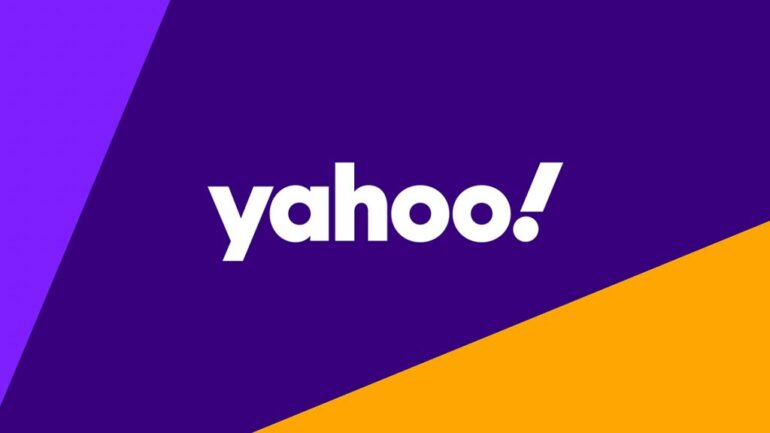TL;DR:
- Yahoo introduces Blueprint, a new DSP feature that combines AI and first-party data for midflight campaign optimization.
- Blueprint leverages Yahoo’s owned-and-operated site data, along with user purchase and location data.
- The tool provides algorithmic recommendations for multiple campaigns in a single dashboard.
- Yahoo shifts focus from SSP to prioritize DSP and enhance campaign performance.
- Advertisers benefit from Blueprint’s time-saving capabilities, freeing up resources for client outreach.
- The tool offers recommendations based on KPIs, targeting audiences, and Private Marketplaces (PMPs).
- Yahoo emphasizes the value of first-party data for privacy compliance and effective targeting.
- Blueprint also incorporates third-party data to enhance decision-making.
- Yahoo’s SDK integrations with location data providers strengthen its DSP capabilities.
- Concerns about transparency in AI optimization tools persist in the industry.
Main AI News:
In the dynamic landscape of digital advertising, AI-driven performance optimization is gaining significant traction. Yahoo, a prominent player in the field, has recently unveiled Blueprint, a groundbreaking feature within its Demand-Side Platform (DSP). Blueprint leverages a combination of cutting-edge AI technology and valuable first-party data to offer real-time optimization recommendations, empowering advertisers to achieve their campaign objectives and assess a user’s lifetime value and conversion potential.
Yahoo’s solution capitalizes on first-party behavioral data sourced from their owned-and-operated websites, as well as valuable purchase and location data collected from users logged in with Yahoo email addresses. While Yahoo’s DSP has incorporated AI capabilities in the past, Blueprint takes it to the next level by providing algorithmic recommendations for multiple campaigns through a unified dashboard.
With the discontinuation of its SSP in February, Yahoo has shifted its focus toward assisting advertisers in achieving optimal campaign performance, as stated by CRO Elizabeth Herbst-Brady. This strategic move aligns with Yahoo’s commitment to bolster its DSP business, following the introduction of the Backstage direct-to-publisher buying solution.
Adapting to Market Evolution
Yahoo’s new approach reflects the evolving landscape of programmatic advertising. According to SVP of product strategy and management, Adam Roodman, Yahoo’s decision to exit the SSP business is influenced by the increasing proficiency of publishers in monetizing their inventory through header-bidding wrappers. Consequently, publishers are becoming less dependent on publisher tech platforms.
Similarly, the launch of Blueprint aligns with the growing sophistication of advertisers on the buy side. Advertisers today have access to a wealth of data and are well-versed in leveraging consumer insights. However, they seek to delegate the meticulous task of troubleshooting campaign performance and experimenting with different audience segments to AI algorithms.
Experiential and digital agency Red Moon Marketing attests to the efficacy of Blueprint. Benjamin Cao, the agency’s digital marketing director, highlights how the tool’s ability to optimize multiple campaigns from a single dashboard has liberated valuable time for their team. This newfound efficiency allows them to concentrate on client outreach and internal education initiatives.
Blueprint’s Workflow
Blueprint initiates its workflow by considering an advertiser’s Key Performance Indicators (KPIs) and subsequently offers recommendations for target audiences or Private Marketplaces (PMPs) to enhance performance. These recommendations are presented alongside projections of how different audience targeting strategies will impact the specified KPIs. Clients retain the autonomy to opt into these suggested campaign strategies.
For instance, if Red Moon is running an awareness campaign, Blueprint may suggest implementing private marketplaces with lower Cost Per Mille (CPM) rates or adjusting bid strategies to lower CPM costs. Conversely, when optimizing click-through rates (CTR) for a lower-funnel campaign, Blueprint may recommend high-CTR marketplaces or propose the deactivation of underperforming audience segments.
First-Party Data Advantage
Blueprint is readily available to all Yahoo DSP clients through their existing dashboard. The initial phase of implementation introduces new data visualizations, audience insights, integration of campaign forecasting tools, predictive audience modeling, and customer lifetime value features. Yahoo plans to announce further updates in the coming summer.
Furthermore, Yahoo’s Backstage direct publisher connection is integrated as a supply source for Blueprint optimization whenever it aligns with a specific campaign’s requirements. Yahoo underscores the value of its first-party data in its pitch for Blueprint, as marketers increasingly prioritize partners with robust first-party data pools. Utilizing first-party data, collected with user consent, facilitates compliance with privacy regulations.
It’s important to note that Blueprint doesn’t rely solely on first-party data; it also incorporates third-party data, assigning equal significance in its algorithmic decision-making process. For instance, instead of relying solely on sales data from retailers, Blueprint taps into digital receipts sent to Yahoo email accounts. This anonymized data is used to create targetable audiences and generate lookalike audiences for similar purchases, making it a valuable asset for digital campaigns, particularly in the consumer packaged goods (CPG) sector.
Leveraging Location Data
Yahoo’s SDK integrations with location data providers Lifesight and Cuebiq further enhance the capabilities of its DSP. These integrations enable the recommendation of targetable audiences consisting of individuals who frequent specific areas. This functionality proves indispensable for driving consumers to physical stores, as highlighted by Cao of Red Moon Marketing.
Transparency and Accountability
While AI-driven optimization tools offer immense benefits, concerns regarding transparency persist, particularly in relation to competing products like Google’s Performance Max and Meta’s Advantage+. Yahoo is committed to fostering open communication with advertisers regarding the data that informs its algorithmic recommendations. Importantly, advertisers maintain the final say when it comes to implementing campaign adjustments.
Cao emphasizes the importance of transparency in the industry, expressing concerns about the sustainability of operating in an environment with minimal transparency. He believes that companies like Yahoo setting a precedent for transparency in their optimization engines is a positive step forward.
Conclusion:
Yahoo’s Blueprint signifies a significant step in the ad tech industry, as it integrates AI and first-party data to streamline campaign optimization. This move reflects the evolving market landscape, with a focus on enhancing ad performance and addressing advertiser concerns about transparency and data privacy. Advertisers stand to benefit from greater efficiency and improved targeting, while Yahoo sets an example for transparency in AI-driven advertising.

